It’s been an interesting week or so here at Casa de Fire Ant, thanks to the endless parade of wildlife traipsing past our abode, occasionally stopping to destroy our lawn on their way to whatever other endeavors attract them.
Last week, we went out of town for a couple of days but I left my game camera activated to see what went on in our absence. That turned out to be a wise decision, from this amateur naturalist’s perspective. I’ve stitched together something like a “best of” compilation from the several hundred photos and short videos recorded by the camera.
While the buzzards provided a bit of comic relief, the obvious star of the show is the bobcat that appears around the one minute mark of the video. We had recently heard reports of a bobcat in the neighborhood but this was the first time since we moved here two years ago that I’ve actually captured an image of one. Here are another couple of looks at the big cat:
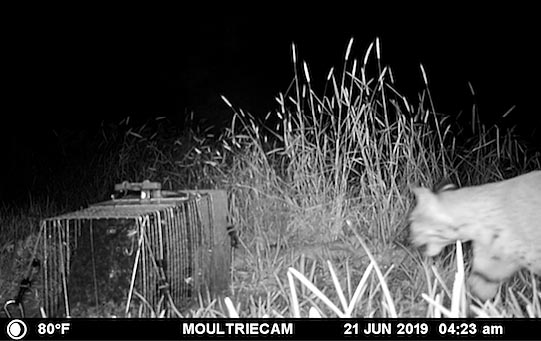
Note the distinctive black bands on the front legs, a distinguishing mark of the species.
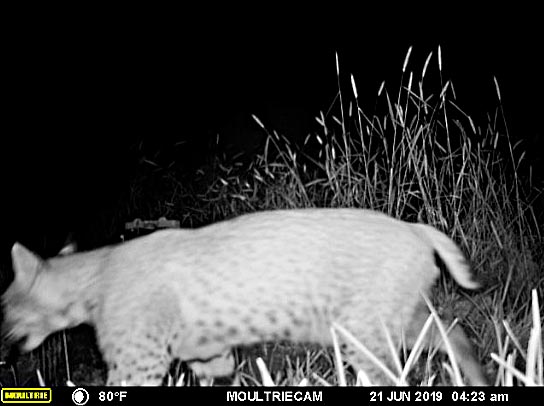
The bobcat’s name derives from its stubby tail; the spots on the fur are another distinction.
The bobcat appeared on camera again, a couple of nights later, at almost the same early morning time. It walked so close to the camera that this is the only image that was captured.
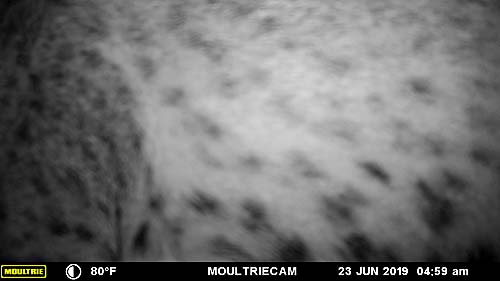
A day or so later, I noticed a flurry of activity on the ground in the vacant lot on the west side of our house. It was a gathering of buzzards, and even from a distance I could see that they were intent on devouring something.
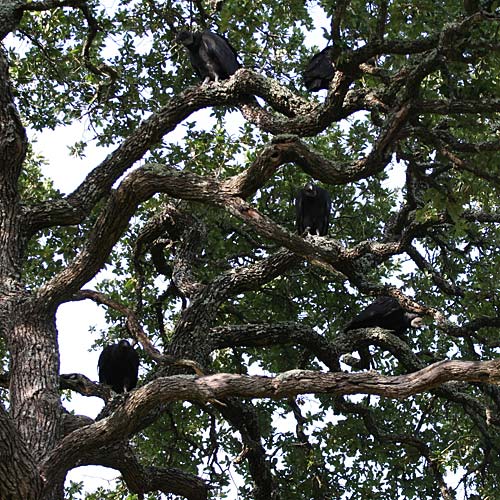
Four buzzards in a live oak tree
I walked over and the scavengers flew into nearby trees, unwilling to completely abandon their meal, which, to my dismay, was a whitetail fawn. The carcass was significantly damaged, but I couldn’t discern whether that was due to the work of the buzzards or evidence of the fatal attack by…something.
Of course, my immediate thought was that the bobcat was responsible; its repeated appearance in conjunction with the dead fawn seemed like more than coincidence. Bobcats are known to take young deer, even though the latter are often larger than the cat.
However, the more I learned about both the bobcat and the other predators that prey on fawns, the less sure I became about the identity of the perpetrator. It seems that bobcats don’t usually leave their prey after a kill. It’s also entirely possible that a raptor such as a hawk or an eagle could kill a very young fawn, and there are red-shouldered hawks nesting in the trees (see photos below) near where I found the carcass. (I was also told that caracaras have been known to prey upon fawns — yeah, I had to look them up, too. I’ve never seen one but that doesn’t mean they’re not around. The Audubon link shows that they’re “uncommon” in this part of Texas; their common Texas habitat is in the far southern part of the state.)
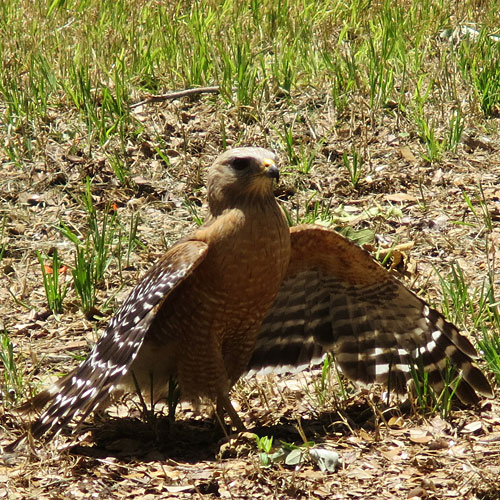
Red-shouldered hawk sunning itself next to our driveway
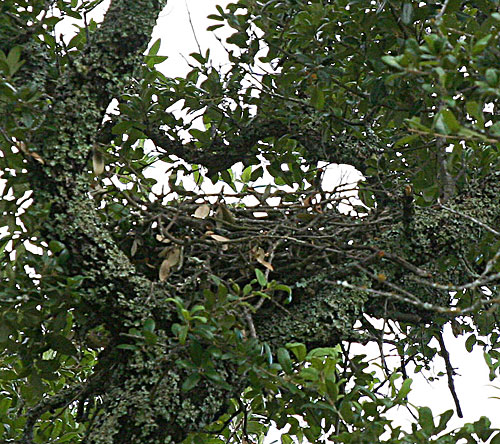
This hawk nest is about fifty feet above the ground, in a tree in the same vacant lot where the fawn carcass was found.
At the end of the day, the mystery of the deceased fawn is still just that: a mystery. I still lean toward the bobcat as the prime suspect, but we haven’t even considered that a copperhead or rattlesnake dispatched the little guy. It’s a tough world out there, sometimes, and the story doesn’t always have a happy ending.
Discover more from The Fire Ant Gazette
Subscribe to get the latest posts sent to your email.

You certainly have some varied wildlife at your house. Loved the video!
Anna and Scott
Thanks, Anna. There’s never a dull moment around here!